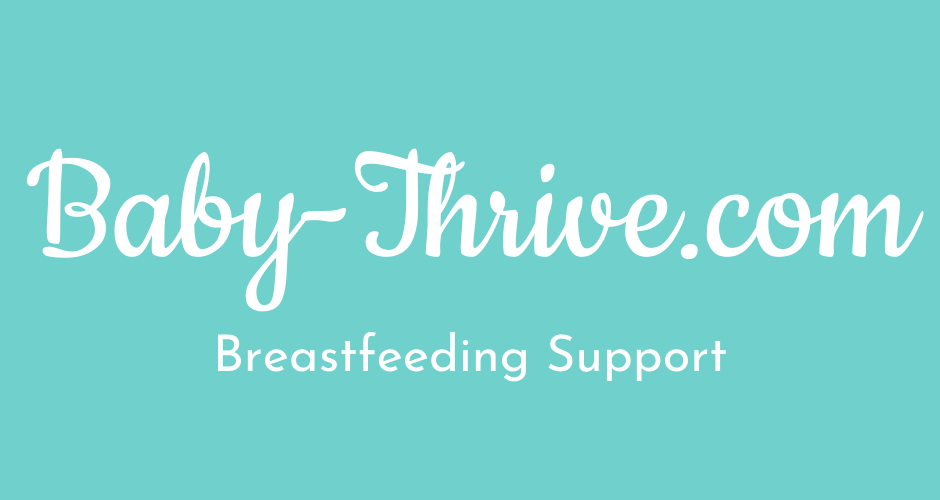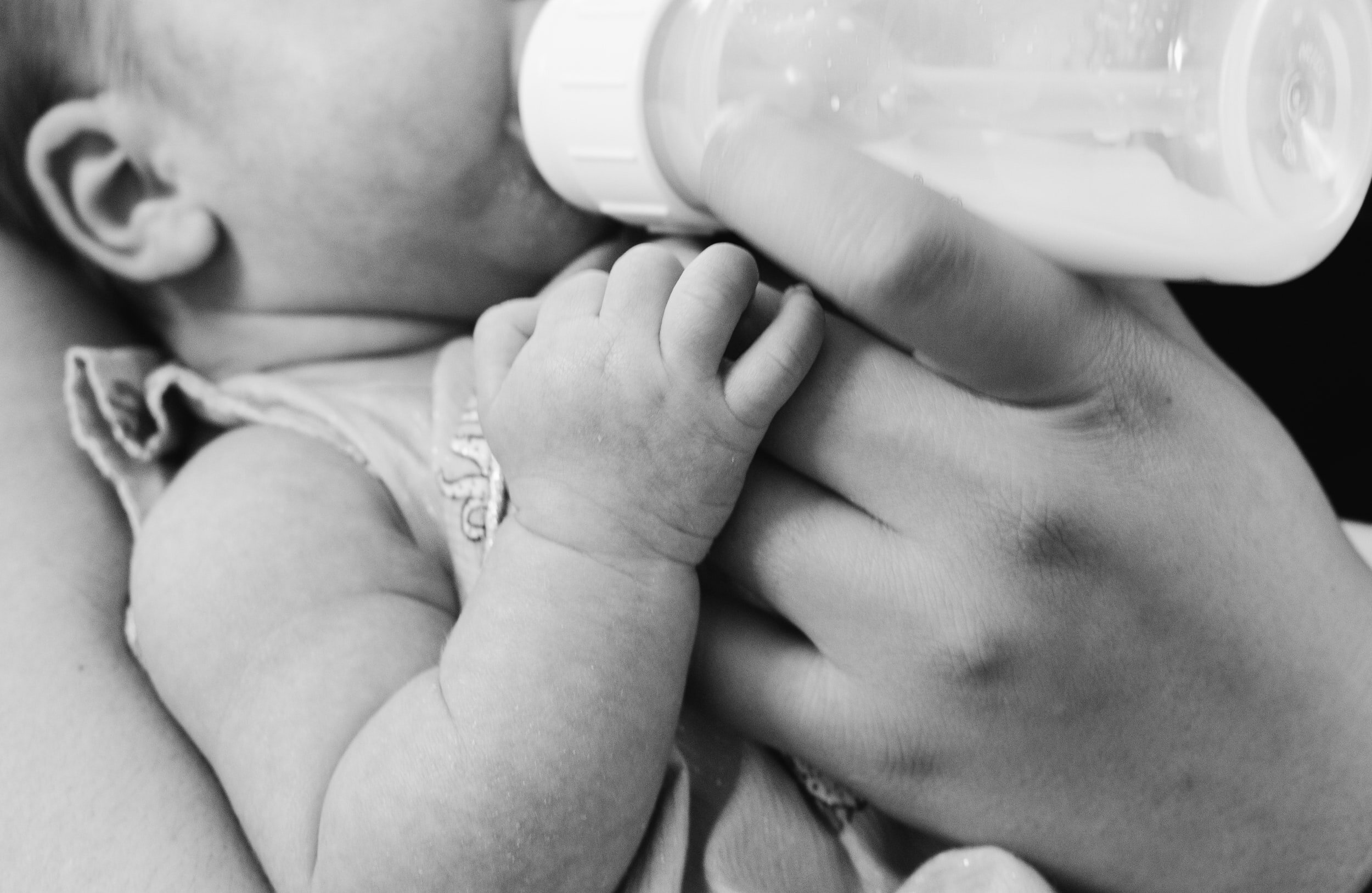Balancing Breastfeeding and Bottle-Feeding: The One Bottle a Day Approach
Sharing the work (& experience) of feeding - how to pump a bottle a day for someone else to give.
This is such a common question I thought I’d make a blog.
I’ll start with the “How-to’s” then some considerations & finish with alternatives.
How to pump a bottle a day:
What works for lots of people is to pump first thing in the morning, because often milk supply is more ample then. Also babies are often in a more compliant mood in the morning & may lie next to you on a blanket or similar to allow you time time to get your pump set up.
You might find that you can feed your baby one breast and pump the other breast (sometimes even at the same time if you have a wearable pump or suitable bra)!
Picture below kindly donated by a member of my breastfeeding cafe - multitasking doing both at once (great skills)!
If your baby likes to drink both breasts in the morning feeds then you might find you need to feed the baby and wait about an hour and then try to have a double pumping session.
In this case you might only get half a portion & will need to find time later in the day to repeat the process to get a full feed.
Finding time to do this can be quite challenging, babies are very unpredictable and sometimes someone will find their baby wakes needing a feed as soon as they finish their pumping session …so they offer the pumped milk then & there’s nothing available for a helper to give later!
When to start?
During antenatal classes many families are warned not to introduce a bottle too early through fear of “nipple confusion” or advised to wait until “breastfeeding is established” -However, I find that after 5/6/7 weeks old many babies refuse bottles. Ask your local IBCLC or breastfeeding support service for more info on your individual case.
How to store the milk:
The best milk for your baby is fresh milk so most people pump each day the milk for that evening, or pump each day for the next day. If you do 2 pumping sessions in one day you can mix the milk & store together.
Infographic from Kathryn Stagg IBCLC
How to give the milk to baby:
Anyone who feeds your baby with a bottle should be educated on how important it is to be responsive and watch the baby while feeding for hunger cues and signs of stress.
Below is a link to watch: it's a really helpful film because it explains intuitive bottle feeding, not just how to do it but why to do it and what to look for.
Breastfed babies refusing to accept bottles is a very common problem. If you are certain you want or need your baby to accept bottles it’s worth offering frequently (maybe every other day), some milk in a bottle to keep up practice. Blog about bottle refusal here.
If you are offering a bottle because you want your baby to continue to accept a bottle (rather than because you will be separated at the time the bottle is given), you could try offering "snack" bottle of 40 ML (for instance) each day or every other day. You might be able to use “catch” milk from a Hakka-style silicone pump for this smaller quantity.
Note Hakka milk is not always suitable for a full portion more info (here)
How much milk to offer:
These numbers are meant to be a rough guide. If you use the paced feeding method described above, and bear in mind that 120ml is the maximum portion size, you will hopefully find the right amount for your baby.
If you are offering a bottle hoping your baby will have a full feed from someone else so you can skip a feed & just sleep…a few considerations;
Potential damage to your milk supply by missing a feed-
Any time you go longer than your usual 3hrs (or less) without a feed or pumping session your breasts may start to become quite full and feedback inhibitor of lactation will kick in, sending a signal to your brain to make less milk. Some people can get away with much longer stretches between feeds and others have to feed very frequently. This difference depends on your breastmilk storage capacity. Helpful infographic here. Taking long gap between feeds or pumps could damage supply.
To mitigate any damage maybe you could feed your baby, leave her with some else, go to bed for up to 4hrs but then you would ideally need to pump or feed. Maybe try different stretches of sleep & try to monitor any feeling of being over-full. Definitely don't let your breasts become very heavy or hot or lumpy as you could get mastitis.
Alternatives:
Offer a bottle of Formula:
Non-exclusive vs exclusive breastfeeding- Do you know why EXCLUSIVE breastfeeding is the recommendation?
Beware this is in the category of unwelcome truths (and I’m certainly not going to berate anyone for using formula). But, if you are ever in the situation of giving formula when expressed breastmilk could easily be available, or wondering if offering infacol or gripe water will “do no harm” the question of “Why EXCLUSIVE breastfeeding” is worth considering.
The simple answer is that before around six months your babies gut is not sealed, whole proteins and pathogens from formula and other products can pass easily from the babies gut into the body where they can affect short and long term health. The gut flora of a baby who receives just 1 bottle of formula each 24hrs quickly becomes much closer to that of a formula fed baby, compared to a baby who receives only breastmilk. And this change has life long negative effects on health. Very simple explanation is that one bottle of formula per day or even per week undoes much of the goodness of breastfeeding (only as far as gut microbiome is concerned-ouch)! It's a horrible fact, I myself gave my first son the occasional bottle of formula just because I had a free sample and for no other reason-I just didn't know any better at the time!
As an alternative:
Could you feed the baby, then sleep for 3-4hrs, wake to do a minimal pump eg: wake up, reach for pump, 10min double electric pumping in bed, place pump beside the bed & roll over… your helper refrigerates it cleans the pump. Bear in mind the milk can be 6hrs at room temperature and the pump probably doesn’t need sterilising (info here), just washing.
Another alternative:
You sleep, helper brings baby, feed lying down on one side rollover feed lying down on the other side partner takes baby, burps baby, changes nappy et cetera. Is this harder/easier/more appealing than pumping?
Diagram on side-lying from MilkWorks
And did you know you might not need to sterilise your bottles and pumping equipment? Info here.
This blog on how to get your breastfeeding baby to accept a bottle, so you can rest while someone else feeds.
And if you are reading this maybe you’d like to know if coffee is compatible with breastfeeding! Info here.
Would you would like me to visit you at home to support breastfeeding your baby? I can support with mixed feeding plans, transiting to bottles or moving away from top-up’s. Please see the home visits info (here).
Sally
Feed volumes evidence - https://www.liebertpub.com/doi/10.1089/bfm.2022.0281





